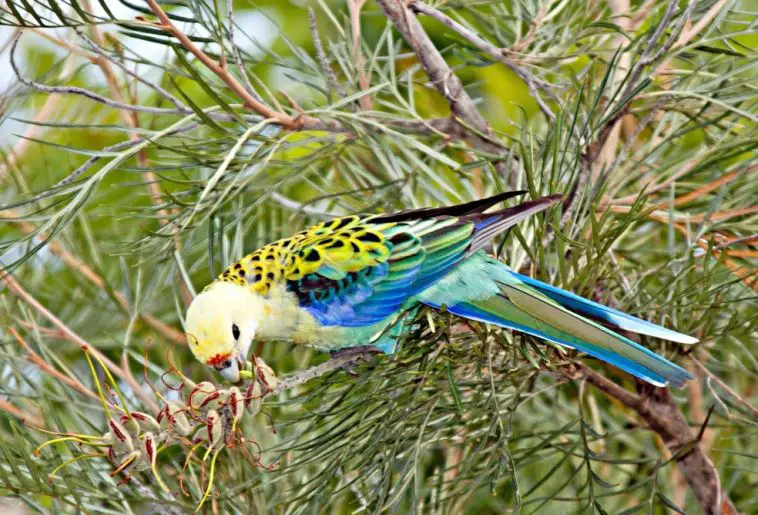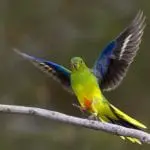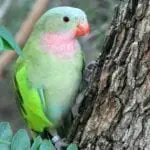Scientific Facts
| Common Name | Pale-headed Rosella or Blue-cheeked Rosella |
| Scientific Name | Platycercus adscitus |
| Size | 30 centimeters |
| Life Span | 15 – 20 years |
| Habitat | -open woodland, scrub, riverine woodland, grasslands, roadsides -Lantana thickets, agricultural areas, orchards, and coastal heath |
| Country of Origin | Australia |
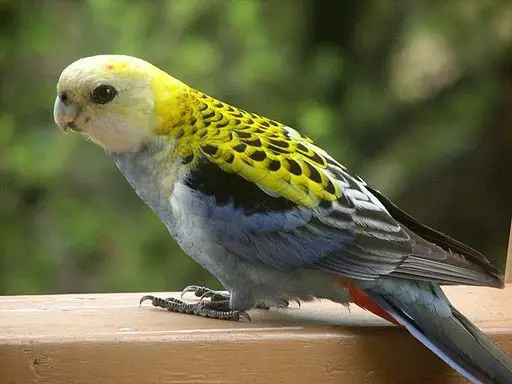
In 1790, John Latham, an English ornithologist, first described the Pale-headed rosella. There are two subspecies, adscitus (Cape York Peninsula), and the better-popular palliceps (eastern Queensland), known as the blue-cheeked rosella. Its closest kin was considered to be the eastern rosella, which substitutes it in southeastern Australia. Cross-breed of the two taxa have been reported where their scales appear in southeastern Queensland and northeastern New South Wales. However, a 2017 mitochondrial research discovered that the closest family was, in particular, the northern rosella and that the eastern rosella was a more primitive offspring.
Other familiar names periodically observed incorporate Blue-cheeked Rosella, blue rosella, Moreton Bay rosella, and mealy rosella for the northern subspecies. The name white-cheeked rosella has been applied for a superspecies or species merging the eastern forms and the pale-headed.
Physical Description
Known as Platycerus, the little family of Rosellas yields a faction of similarities in their physiognomy. Their small head and beak present a rather adorable face, and they receive the well-known thick tailpiece. The grown-ups attain a standard length of 30 centimeters (12 inches) and can balance approximately 120 grams (4 ounces ). Their tail is 15 centimeters (6 inches) long on standard, holding up half of the entire size. These are slender and light birds, and they possess a lot of strength. Give a large enclosure for your Pale Headed Rosella and guarantee they go cruising about your parrot-proofed place, as well.
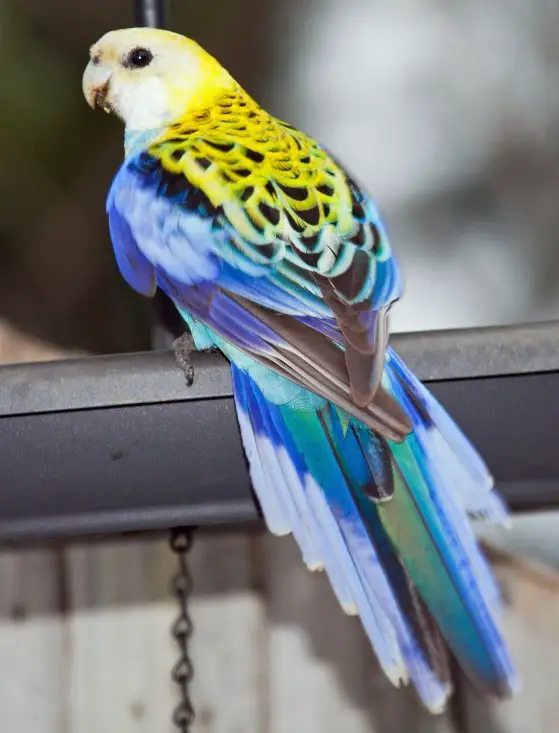
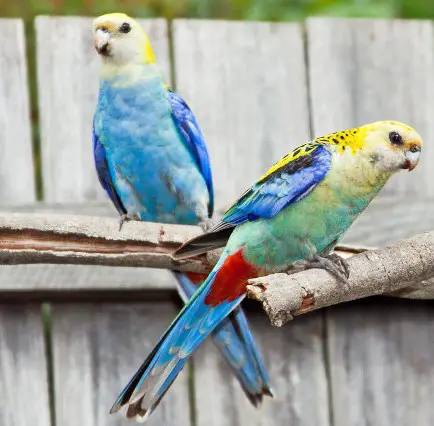
The variety of unique patterns and details provides these parrots an absolutely alluring feature. It’s not frequently that people observe numerous diverse small features on a bird of this extent, and it presents them bizarre on every degree. The abdomen, crown, and chest are almost exclusively white, with sparse blends of very light blue. The primary flight plumages and tail are deep blue, while the rear and tip of the appendages are black, outlined with dense yellow tips. This produces a bizarre design that grants them a flaky look. The back is red. All these shades and features blended to create a hurricane of details, particularly in flight. The Pale Headed Rosella is beautiful without uncertainty.
Gender ID
Males and females resemble chiefly identical, except the females frequently have a lighter underside, and her beak is moderately smaller, and the males tend to be somewhat larger.
Sexing juvenile birds can show tricky, and DNA sexing may be the sole method to identify their gender for certain at an early age. Though, birds at least 9 months or older could be vividly sexed, as they begin shedding toward their grown-up feathers.
Immatures
Juvenile birds mirror grown-ups, except for a darker feather. The neck (nape) and the rear of the head frequently have several dispersed red plumes. The underwing band is lighter in the youngs. Juvenile birds acquire the grown-up pigmentation when they are 12 to 16 months old (following their second shed).
Similar species
The Pale-headed Rosella is comparable to the approximately kindred Eastern Rosella, which can be effortlessly be recognized by the rich red crown and upper breast, as opposed to the light yellow head of the Pale-headed Rosella. Their cries are comparable. The two species are known to cross-breed in regions where their spans protrude – managing to offspring with mixed features.
Geographical Range
The Pale-headed Rosellas occur naturally along the northeastern and eastern seaboard of Australia, from Cape York throughout most of eastern Queensland to Southern New South Wales. They are mostly absent from the arider (drier) interior regions. They are considered to be “resident” (non-migratory), and its population is reported to be abundant throughout much of its range (del Hoyo et al. 1997).
Habitat
The Pale-headed Rosella they are prevalent in all kinds of environments of open woodlands, either heaths, scattered woodlands with lumbering, the series of trees adjacent to the streams or swamps. They are likewise located in the woody moors which encompass the shore and are managed by trees of the genus Banksia.
Evade rushing toward the dense forests, providing a decision to the clear, meadows at the banks, or immediately border the areas. They likewise infiltrate the neighboring farmland to feed.
They are birds of the lower ranges, infrequently soaring above 700 meters and deliberately leaving elevations to the Crimson Rosella in compact forests and semi-montanosas fields.
Common Behavior
The dynamic, vigorous Blue-headed Rosella delivers a subtle appearance in the suitably furnished aviary, but it has a lower standing as a sole pet. There are numerous statements of this species returning to its natural environment and getting pretty hostile or cold against masters.
Do not regard the Blue-headed Rosella without a purpose for what occurs if your pet regresses to its primitive sense. Do you possess enough place to present it with a flight where it can be acknowledged for its excellence and take vigorous activity? If you can recognize a gorgeous animal who doesn’t want to be touched by you or somebody else, then the independent, moderately aggressive Blue-headed Rosella may be ideal for you. But if you’re seeking for a lifetime ridge bird, you must essentially unquestionably observe elsewhere.
Speech and Vocalizations
Pale-headed rosellas are usually loud, except when nursing, which is commonly executed in secrecy. When nestling in flocks, low talking, or piercing accelerated ‘pi-pi-pi’ unity, cries can be caught. Their warning cries are harsh and noisy. In-flight, they produce ‘kwik, kwik’ articulations.
The species is recognized for their skill as whistlers. They are competent in learning a mixture of plain melodies, reciting them in a proficient and harmonious sound. The natural cries of Pale Headed Rosella are sharp, and ear-piercing chirps repeated somewhat throughout the day. Although their chanting is adored and often mild, it might present them less appropriate for a studio context.
Diet and Feeding Habits
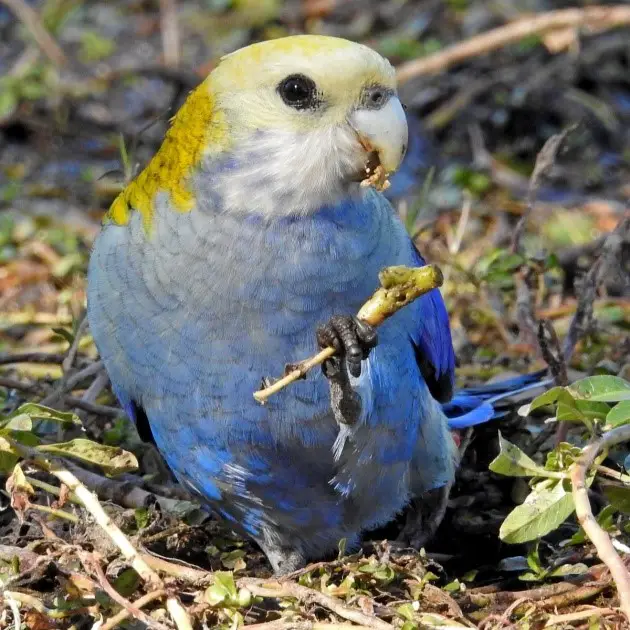
Natural Diet
In their natural territory, they chiefly serve on tree seeds (including sprouted seeds that dropped to the floor and were exposed to humidity) and grass, various fruits, including the fruits (and conceivably foliage) of the River Sheoak (Casuarina cunninghamiana), River Red-gum (Eucalyptus camaldulensis), melaleucas trees and Rough Cockleburr (Xanthium strumarium), and flowers. They likewise feed on the bulbs of the included Scotch Thistle (Onopordum acanthium). Their nutrition also incorporates a mixture of nectar and berries.
Moreover, they capture bugs in their larvae – especially during the reproducing period, when they demand more protein in their menu.
They scavenge in the woods and bushes, as well as on the soil – usually in shaded domains.
Captive Diet
A certified Rosella nutrition must consist of canary grain, a mixture of millets, safflower, and sunflower. Most individuals will use a Cockatiel seed mix with added Canary seed. They likewise savor fresh vegetables and fruits such as mango, sweet potato, cucumbers, oranges, blackberries, and apples. Kale, a poached egg, can also be given.
Germinated or sprouted seeds are normally more readily acquired by “grain enthusiasts” than raw vegetables and fruits.
Germinated seeds are more potent as the ripening modifies and intensifies the dietary value and quality of grains and seeds. Germinated seeds are lower in fat, as the method of germinating employs the fat in the grain to commence the developing procedure, therefore decreasing the fat deposited in the grains.
Germinated grains will better support your bird’s nutrition by supplementing a healthy supply of high vegetable proteins, chlorophyll, enzymes, minerals, and vitamins.
Softened and sprouted “fat” seeds, like rape and niger seeds, are loaded with carbohydrates and protein, while “starch” seeds, such as millets and canary, are flush with carbohydrates, although lesser in protein.
It is a priceless food generally; however, it is exceptionally essential for shedding or breeding birds. Germinated seeds additionally work as a prominent weaning and rearing food as the feeble crust is more comfortable to split by chicks and makes them accustomed to the sense of seeds.
Reproduction and Life Cycle
In their natural territory, the reproducing period is affected by precipitation as entirely as the area of their nestling sphere. Southern birds commonly breed between February to June, at the same time, those located in the northern areas, frequently breed between September to January.
In the southern parts of the United States, they may breed throughout the year; in the northern USA, they mostly breed from April through September.
The pursuing male will bend forward low on the roost while verbalizing out the mating shrieks. The drawn female will produce the equivalent. This is generally supported by shared feeding and then the concrete exploit of mating.
Wild Pale-headed Rosellas commonly dwells near water, in the hollows of either stagnant or existing trees, normally in eucalypts, or deep posts and stumps. The dwelling hollow is commonly over 1 m (3 feet) deep and discovered up to 30 m (100 ft ) above the terrain.
The nest platform is generally treated with wood particles. The female solely nurtures the embryos while the male supplies her and serves to give meals for the juvenile. In the native, they commonly yield 1 – 2 offspring a season.
Lifespan / Age of Maturity
Pale-headed Rosellas can be assumed to exist 15 or more years. Females attain generative development when they are nearly 18 months old, while males can favorably propagate when they are 2 – 3 years old.
How to Breed
The breeding season alters depending on the area, with northern birds nesting from February to June and southern ones later from September to December. One flock is produced. The dwelling place is generally a hole over 3 ft (1 m) deep in a tree block anywhere up to 100 ft (30 m) above the terrain. Although even seen to cradle in a wood log deep buried. A clutch of five or six (whereas up to nine have been reported) moderately shiny, round, and white eggs, averaging 26 x 22 mm, is produced.
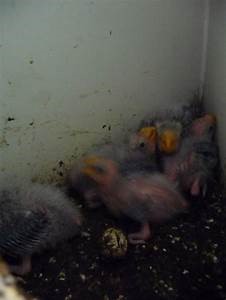
The embryos are produced on timber granules. Solely the female nurses, though several days following hatching, the male assists with supporting the newborn.
Pet Care
Housing
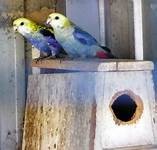
A couple of Pale-headed Rosellas are generally held in a huge, consumer aviary, with suitable security in position to protect toward illness-carrying mosquitoes and larger troubles such as opossums, rats, or raccoons. They haven’t deemed a species that worries much regarding playthings, but they will enjoy relevant roosts apportioned to enable them loads of scope to soar. They are notably hostile and shouldn’t be required to yield the flight with any different birds. A webcam observing installed, including the relevant barriers, must prevent robbers.
Before you pick a Pale-headed Rosella as a family pet, you may need to catch a practical glimpse at how full scope you possess. With their long elegant tails and their eagerness to practice by circumnavigating rather than by engaging with playthings, you must seemingly be ready to provide long aviation that controls a huge place.
If your bird stays gentle, you can feasibly take away with a powder-smeared metal enclosure 91cms x 61 cms x 91 cms with no more than 1.3 cms pole spacing, with variously sized roosts installed to boost traveling the range of the enclosure. If the bird does return to being a remote, untamed beauty who favors being stared at but not handled, then you must give a much larger flight. You may require contemplating having the precise aviation custom-built.
Health and Common Conditions
One of the points that drove to the fame of the Pale Headed Rosella in aviculture is their robust wellness. They can exist out of the existence of approximately 15 or longer years, without any problems along the process. With all of their necessities sufficed and the nestling requirements at a maximum level, you will discover that these birds are versatile and powerful. Always bear in mind to present a lot of mingling, to retain your pet psychologically aroused and human-friendly.
Availability
Rosellas are more prone to be accessible from a bird grower or an avian-specialty shop.
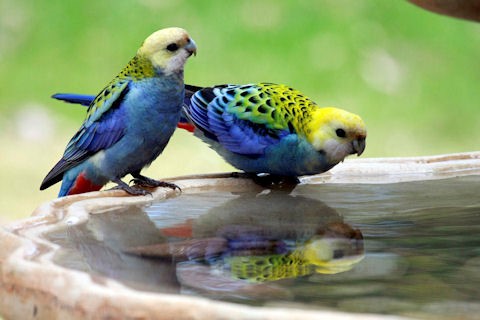
Conservation
This species has a surprisingly broad range and therefore does not address the doors for Vulnerable following the scale size standard (Area of Existence <20,000 km2 consolidated with a decreasing or varying scale size, territory quality/extent, or distribution size and a small number of places or critical fragmentation).
The population inclination seems to be progressing, and therefore the species does not address the doors for Vulnerable following the distribution trend criterion (>30% slump over ten years or three generations).
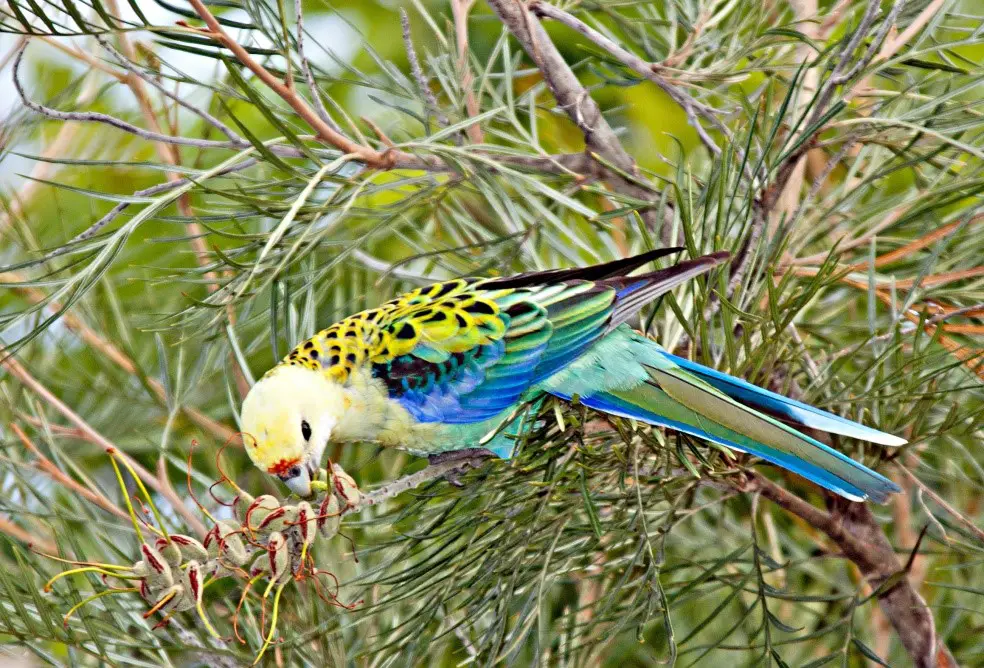
The distribution size has not been identified, but it is not assumed to address the doors for Vulnerable beneath the distribution size standard (<10,000 grown-up individuals with an ongoing slump measured to be >10% in ten years or three generations, or with a detailed population structure). For these analyses, the species is assessed as Least Concern.
FAQs
How long do pale headed rosellas live for?
Pale-headed Rosellas can be assumed to exist 15 or more years.
Are rosellas loud?
Rosellas are known for their harsh, yelling voices (although articulating less commonly than some other parrot species) and trend to be heavy chewers.
Can rosellas eat a banana?
Rosellas commonly favor consuming non-native fruits such as mangoes, oranges, blackberries, and apples.
Do rosellas talk?
Rosellas are not regarded as particularly excellent talkers, so they are not a desirable option for those who have their spirits set on keeping a talking bird.
Are crimson rosellas endangered?
Least Concern (Population decreasing)
Are rosellas good pets?
They can be friendly if they are constantly associated with it. Rosellas do excellent aviary birds, and will yet maintain their pet feature in a flighted condition if you use the time to engage with them.

